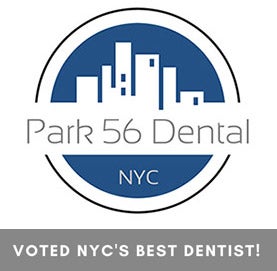Do Cavities Have a Distinct Smell?
Imagine sitting in a dentist’s chair, anxiously waiting for the results of your routine check-up. The dentist peers into your mouth and suddenly comments on a peculiar smell. Could it be that cavities have a distinct odor? This scenario might sound unusual, but it touches on an intriguing question that combines dental health and the science of smell. Today, we investigate whether cavities have a smell. By exploring the science behind odors, examining current research, and considering the practical implications, we will discover whether our noses might aid in the early detection and treatment of dental cavities.
Understanding Cavities
Cavities are one of the most common dental problems worldwide. They form when the hard surface of the tooth, known as enamel, is damaged by acids produced by bacteria in the mouth. These bacteria thrive on sugars and starches from food and drinks, producing acids that erode the enamel over time. As the enamel breaks down, it creates small holes that can grow larger and deeper if left untreated. Common symptoms of cavities include tooth pain, sensitivity to hot or cold foods and drinks, and visible holes or dark spots on the teeth. Understanding the formation and progression of cavities is essential because early detection and treatment can prevent more severe dental issues and maintain overall oral health.
The Science of Smell
The sense of smell is a complex and fascinating process that involves the detection and interpretation of chemical molecules in the air. This intricate system allows us to detect a wide range of odors, from the pleasant aroma of fresh flowers to the warning stench of spoiled food. Interestingly, the human body can emit specific odors associated with various medical conditions. For instance, the smell of acetone on a person’s breath can indicate diabetes, while certain infections may produce distinctive smells due to bacterial activity.
Investigating the Smell of Cavities
The potential for cavities to emit a distinct odor stems from the bacterial activity and the decay process within the mouth. Bacteria such as Streptococcus mutans and Lactobacillus play a crucial role in cavity formation, producing acids that erode tooth enamel. As these bacteria break down food particles and dental tissues, they release volatile sulfur compounds (VSCs) and other byproducts that can contribute to bad breath, also known as halitosis. Research into the specific odors associated with cavities is still in its early stages, but there is evidence suggesting that the metabolic byproducts of these bacteria can produce detectable smells. Some studies have focused on identifying these compounds and their concentrations in the mouth. Findings indicate that higher levels of certain VSCs are present in individuals with dental decay compared to those with healthy teeth. The current understanding suggests that the unique odors produced by bacterial activity in cavities could potentially serve as a diagnostic tool, supplementing traditional methods such as visual inspections and X-rays.
Detecting Cavities Through Smell
Traditional diagnostic methods for cavities include visual inspections, X-rays, and probing with dental instruments. While effective, these methods often identify cavities only after they have progressed to a more noticeable stage. The role of smell in diagnosis presents an intriguing possibility for earlier detection. Anecdotal evidence from dentists and patients suggests that certain smells might be associated with dental decay, prompting further investigation into this phenomenon. If cavities indeed produce distinct odors, olfactory detection could become a valuable supplementary tool in dental diagnostics. Advances in technology could lead to the development of devices capable of detecting these specific smells, much like breath analyzers used for detecting other health conditions.
Practical Implications
If the smell of cavities can be reliably detected, it could revolutionize early detection and treatment in dental care. Identifying cavities through smell could allow dentists to diagnose and address dental decay at its earliest stages, significantly improving patient outcomes. Early detection means that treatments can be less invasive, less expensive, and more effective, preserving more of the natural tooth structure and preventing complications such as infections or tooth loss. By integrating smell-based diagnostics into routine dental care, the early detection of cavities could become more straightforward, ultimately leading to better oral health and reduced incidence of severe dental problems.
Preventive Measures
While detecting cavities through smell could enhance early diagnosis, prevention remains the cornerstone of dental health. Maintaining good oral hygiene is essential in preventing the formation of cavities. This includes regular brushing with fluoride toothpaste, flossing daily to remove plaque and food particles between teeth, and using mouthwash to reduce bacterial load. Regular dental check-ups allow for professional cleaning and early identification of potential issues. Dietary choices play a big role in dental health as well. Limiting the intake of sugary and starchy foods can reduce the risk of cavities, as they fuel the bacteria that cause tooth decay. Instead, a diet rich in fruits, vegetables, and dairy products can help strengthen teeth and maintain a healthy oral environment. Fluoride treatments and dental sealants provided by dentists can offer additional protection, especially for children and those at higher risk of cavities.
The Bottom Line
The possibility that cavities have a distinct smell opens new avenues for early detection and treatment in dental care. Understanding how cavities form, the science behind smell, and the specific odors associated with bacterial activity in decaying teeth provides a foundation for this innovative diagnostic approach. While traditional methods like visual inspections and X-rays are effective, incorporating smell-based diagnostics could enhance the ability to identify cavities at their earliest stages. This could lead to more timely and less invasive treatments, significantly improving patient outcomes. As research in this area progresses, the development of smell-detecting devices could become a practical reality, complementing existing dental care practices. However, regardless of advancements in diagnostic technology, maintaining good oral hygiene and regular dental visits remain crucial preventive measures. To learn more about advanced diagnostic cavity detection, contact Park 56 Dental. Our dental team can provide you advanced screenings to make sure your smile stays healthy for years to come.
RECENT POSTS
categories
- Uncategorized
- Cosmetic Dentistry
- Veneers
- Healthier Teeth
- Teeth Whitening
- Dental Health
- Video
- Dental Emergencies
- Invisalign
- Dental Implants
- Root Canal
- Sedation Dentistry
- Infographic
- Dental Crowns and Bridges
- Dental Anxiety
- Gum Disease
- COVID-19
- Bad Breath
- New York Dentist
- Cut out sugar
- General Dentistry
- Oral Health
- Oral Cancer
- Dry Mouth
- Gum Health
- Toothache
- Dental Sealants
- Cavities
